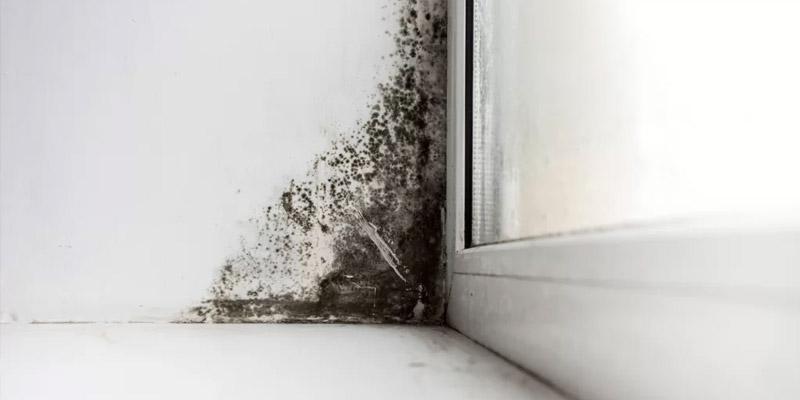
Mold and mildew not only make your house look ugly, they can cause you and your loved ones to fall sick too. Mold and mildew are both fungi and can easily grow on organic matter in damp surroundings.
It isn’t possible to proof your house from mold and mildew. However, you can take preventive measures to make your home mold and mildew resistant. Here are some tips to help you.
Adequate Ventilation Is a Must
Mold and mildew thrive in wet, humid, and damp environments. One way to deal with infestations is ensuring your home is well ventilated. Kitchens and bathrooms should have exhaust fans. The basement must have adequate ventilation too.
Good ventilation will keep your home cool in the summers. During winters, effective ventilation can prevent moisture from trapping into places and forming ice dams or becoming a breeding ground for mold and mildew.
Increase air circulation in your house by letting in fresh air, opening windows and doors between rooms, and moving furniture placed against walls a little away from them.
Maintain Humidity Levels
If the atmosphere inside your house is always humid, mold and mildew are bound to thrive. An air-conditioner can help to some extent, but if high humidity is an issue, get a de-humidifier installed so that the humidity level can be maintained.
Air-Conditioning (AC) and de-humidifier vents themselves can become a breeding ground for mold and mildew. So don’t forget to check them periodically. If you find that your AC or de-humidifier is not working as efficiently as intended, get it checked by a professional.
In addition to that, make sure you aren’t doing things that increase the humidity levels inside the house. If you leave wet clothes in the washing machine for hours or in a bundle in a damp place, the moisture will add to the humidity. Hang wet clothes to dry in a well-ventilated area or outside in the sun.
Keep windows open while cooking or turn the exhaust fan on so as to keep the moisture levels in control. Bathrooms are generally always humid and damp. Again, an exhaust fan can help to keep mold and mildew at bay. Making sure the walls and floors are dry soon after a hot shower will eliminate any chances of mold growth.
Don’t leave wet areas to dry off without doing anything. If you happen to spill a liquid onto your carpet, clean the area and dry it immediately. Carpets not only trap moisture but dirt too- a great combination that makes mold and mildew happy.
Keep a Check on Condensation
Condensation takes place when air laden with moisture comes in contact with a cold surface. You can see it in the form of small water droplets on surfaces such as mirrors and windows. Previous surfaces such as walls and furniture will absorb these water droplets making the problem unnoticeable. This will eventually lead to mold growth.
Condensation is the most common cause of mold and mildew growth in homes. Increasing ventilation and keeping humidity levels in check can lessen condensation. Apart from this, cold water pipes are also responsible for condensation and mold growth. If you see mold growth in a room despite ensuring low humidity levels in the room, perhaps you need to take a look at the pipes. Insulating water pipes can prevent condensation.
It is also important to have the house insulated properly to prevent heat loss. If your entire house remains warm, there’ll be lesser condensation to deal with. Pay attention to lofts, attics and basements, in particular. It is important to note that just insulating your house won’t help; de-humidifying the place is important too.
Fix Your Basement and Roof
Most of the times, the basement is where all the moisture seeps into a house from. Moisture can enter the basement due to flooding or improper drainage, by the capillary action of water, by diffusion, or by air seepage through cracks and joints in walls.
If you know that your basement always stays a little damp, avoid carpeting the floor. Damp carpets in basements can lead to a host of illnesses.
If you have a leaky roof, get it repaired. It will keep mold and mildew away and will also save you from the hassles of replacing the entire roof in the long run. Gutters and downspouts should be kept clean so that rain water can flow easily without damaging exterior walls or creating a puddle.
Check Possible Sources of Moisture
Moisture may be penetrating your walls from just about anywhere. Get to the root cause of it to keep your home free from mold and mildew.
The ground should always slope away from the building foundation. If the ground slopes towards the building foundation, you won’t be able to do much to control moisture seepage. Also make sure that the drainage lines and gutters are functioning as intended.
Inspect areas in and around your home for standing water. Puddles or damp areas around sump pumps, refrigerators, freezers, hot water tanks, windows, curtains and basement doors should be dealt with.
Ground water may be seeping into the crawl spaces thereby adding moisture into your home environment. You can resolve this problem by covering crawl spaces with a plastic vapor barrier. Ask for landscaper’s plastic or 6 mil polyethylene if you need to buy one to trap moisture in the ground.
Conclusion
Mold and mildew can be tough to get rid of. Mold spores can live in a dormant state for a long time even if conditions aren’t favorable. So even if you can’t see mold or mildew in your home presently, it is advisable to take preventive measures.
Engage the Best Professional Mold Remediation Service in Singapore
We are available 24/7. Contact us now to get a free quote!

 How to Deep Clean Your Bathroom
How to Deep Clean Your Bathroom




